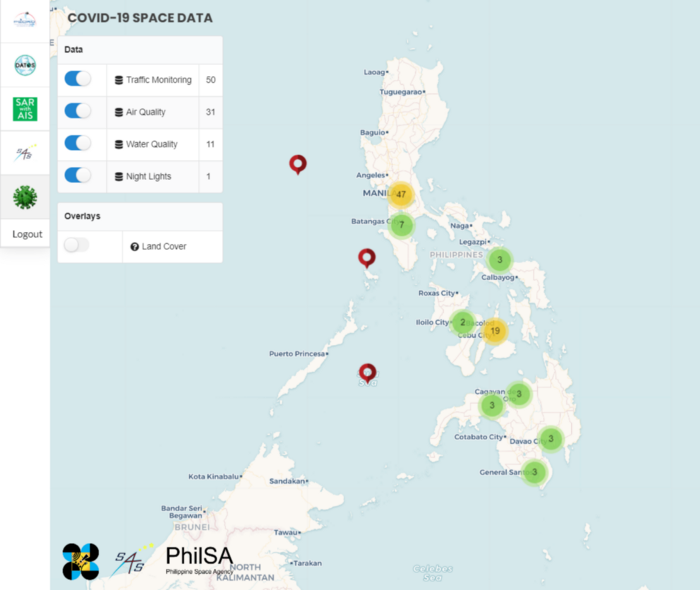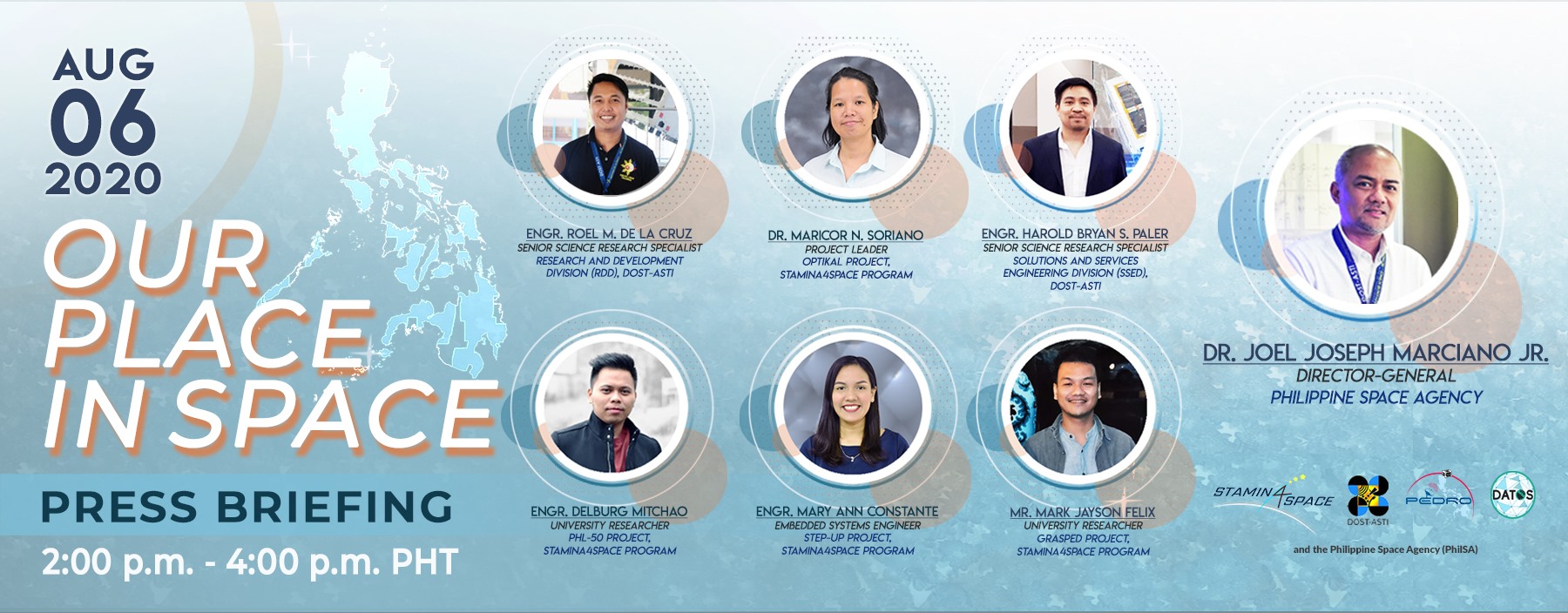Filipino researchers shed light on the current status of the Philippine space sector, as government and academic research institutes, together with the newly established Philippine Space Agency (PhilSA) held the online press briefing, “Our Place in Space” on Thursday, 06 August 2020.
The speakers provided updates on the current and future endeavors of space technology research and development (R&D) in the Philippines such as space data applications for disaster risk reduction and environmental monitoring, space technology localization, and updates on plans and activities of the PhilSA.
The event marked the first year since the Philippine Space Act or Republic Act (RA) 11363 was passed into law.
“While the PhilSA is only recently established and is building from the ground up, it is not starting from scratch. A number of space science and technology applications (SSTA) activities are being undertaken leading up to its establishment,” said the PhilSA Director-General Dr. Joel Joseph S. Marciano, Jr. The PhilSA’s ability to work seamlessly with these existing technological capabilities, infrastructure, and skilled personnel, Dr. Marciano says, gives the PhilSA a solid foundation and momentum that enables the agency to “hit the ground running.”
“The PhilSA, therefore, intends to institutionalize, grow, expand, and nurture these resources so they can yield further benefits and socio-economic impact. It’s very important for the PhilSA to be working closely and harmoniously with these projects and have intimate knowledge on their progress and background so that they can be effectively absorbed, translated, and cascaded into the new agency,” Dr. Marciano added.

A platform that analyzes and compares different sets of space data, the Space Data Dashboard, was also launched during the event. The dashboard features relevant research and development outputs from different DOST-initiated space projects, which are to be absorbed by the PhilSA. Space data available consists of air quality, water quality, night lights, land cover, and traffic monitoring. Users may also access various information on plotted data on the platform, such as data source and descriptive interpretations per satellite image.
The platform also highlights maps and other data in monitoring ground activities related to COVID-19 such as comparison of land and air traffic density, NO2 (nitrogen dioxide) emission observations, nightlights, and pollution monitoring — among many others — before and during the quarantine period.
Coinciding with the first anniversary of the enactment of RA 11363 or the Philippine Space Act, the event featured resource speakers from the PhilSA, DOST-Advanced Science and Technology Institute (DOST-ASTI), and the Sustained Support for Local Space Technology and Applications Mastery, Innovation and Advancement (STAMINA4Space) Program.
“We are grateful to the Department of Science and Technology, the University of the Philippines, and our collaborators for paving the way for space technology development in our country,” said Dr. Gay Jane Perez, Program Leader of the STAMINA4Space Program.
“Our Philippine Space Agency is undoubtedly on its track to fulfill its mission, which is to promote and sustain a robust Philippine space ecosystem that adds and creates value in space for and from Filipinos and for the world,” she added.
Watch the full video of the online press briefing here.
About the Philippine Space Agency (PhilSA)
The Philippine Space Agency was established through Republic Act 11363 or the Act Establishing the Philippine Space Development and Utilization Policy and Creating the Philippine Space Agency. The PhilSA is an attached agency of the Office of the President wherein all space science and technology applications of the country will be centralized. This includes the creation and implementation of space policies, space-related research, and development programs such as National Security Development; Hazard Management and Climate Studies; Space Research and Development; Space Industry Capacity Building; Education and Awareness; and International Cooperation. Further, the PhilSA will represent the country in international space events, meetings, and agreements.
About DOST-ASTI
The Advanced Science and Technology Institute (ASTI) was created by virtue of Executive Order 128 on January 30, 1987. As a Research and Development Institute (RDI) under the Department of Science and Technology (DOST), ASTI is mandated to conduct scientific research and development in the advanced fields of studies including Information and Communications Technology and Microelectronics. It envisions itself to be one of the leading R&D Centers in Southeast Asia through its research programs. Its mission of supporting national development will be realized by using ICT to improve the country in the areas of Education, Environment, e-Governance, and Enterprise Development.
About the DATOS Help Desk
The Remote Sensing and Data Science (DATOS) Help Desk is a DOST-ASTI led project that aims to produce and communicate relevant disaster information to agencies and key end-users to complement the current efforts of existing government agencies and initiatives. DATOS builds on and integrates past and ongoing DOST-supported projects; and different Geographic Information System (GIS), Remote Sensing (RS) and other Data Science techniques.
About the PEDRO Center
The DOST-ASTI currently operates the Philippine Earth Data Resource and Observation (PEDRO) Center. The facility includes Ground Receiving Stations with satellite tracking antennas that receive, process and distribute satellite images and other spaceborne data. These can be used for various applications such as disaster risk management, environmental monitoring and terrestrial and maritime surveillance.

